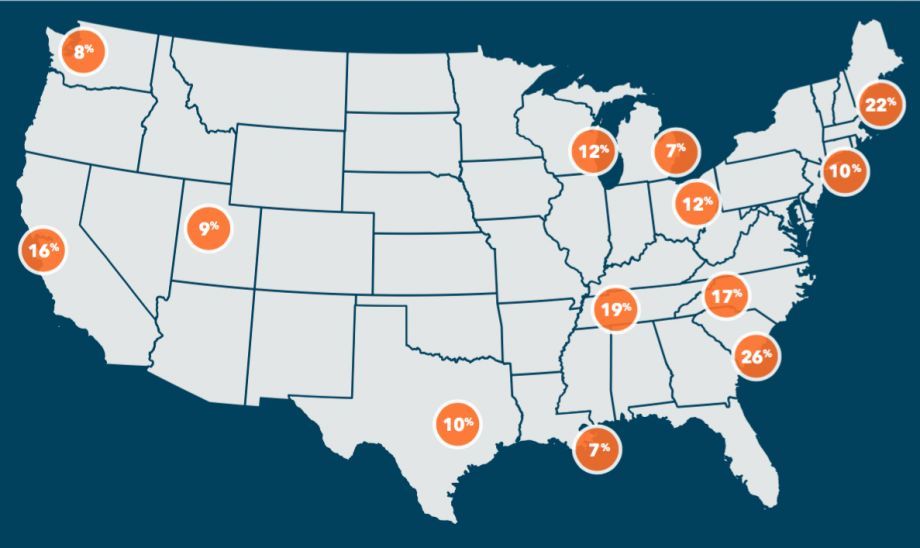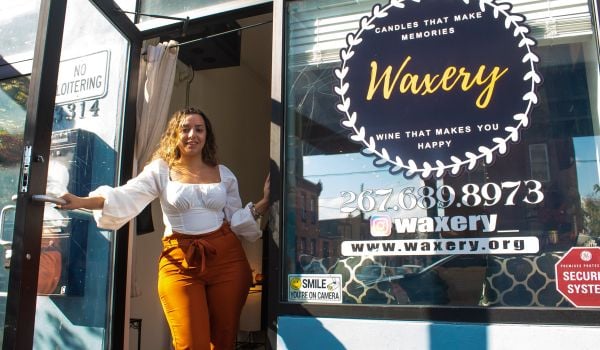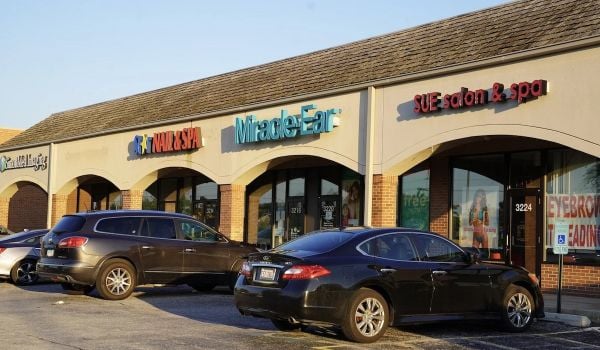In Jane Jacobs’ idyllic portrait of the city, small, independent shopkeepers held a special place. They kept neighborhoods safe, turning eyes on the street and making sidewalks into shared public assets, not just public spaces. They knit communities together, serving as vital nodes for getting the word out. In The Death and Life of Great American Cities, Jacobs credits them with helping her get signatures in support of the campaign that stopped Robert Moses from plowing a highway through Greenwich Village and its Washington Square Park. I could go on and on, and you probably can too.
Those shopkeepers are now staring down a new threat: skyrocketing commercial rents in cities across the country. The battle lines are laid out in a new report from the Institute for Local Self-Reliance (ILSR), “Affordable Space: How Rising Commercial Rents Are Threatening Independent Businesses and What Cities Are Doing About It.”
According to ILSR, in cities as diverse as Oakland and Nashville, Milwaukee and Portland (Maine), retail rents have shot up by double-digit percentages over the last year alone. Its 2016 Independent Business Survey shows 59 percent of independent retailers reported being worried about the escalating cost of rent, with one in four describing it as a top challenge. Even the price of industrial rents is rising, threatening a budding manufacturing rebirth in many cities.
And it’s not just in posh neighborhoods. The Bronx led all NYC boroughs in court evictions of businesses in 2015, up 30 percent from the year before.
The new report cites a complex web of causes for the rise in rents, beginning with rampant real estate speculation. “There’s a tremendous amount of footloose global capital that is looking for a place to get returns. Where a lot of that capital has landed is in urban real estate,” says Stacy Mitchell, co-author of the report and co-director of ILSR. “So there’s this speculative run-up in prices that has little to do with the actual economics of a particular building.”
Mitchell also points out the particular nature of the kind of capital flooding urban markets. It comes with a bias against local businesses. “If you’re buying a building or renovating a building or developing a building with commercial space, if you have signed national brand tenants, you’re going to get a better interest rate and better terms on that loan than if you’ve signed a locally owned business,” she says.
Signing a national brand tenant can even be the difference between getting financing or not getting financing for a commercial or mixed-use development project, according to Mitchell. Otherwise strong local businesses that could pay higher rents can still get shunned by developers. “If you’re doing a development in Salt Lake City and the money is from a national source, they don’t know the King’s English Bookshop and they don’t know that’s a viable business,” she explains. “But they know who Starbucks is.”
“I find it very frustrating that the conversation among policymakers and the media around small business is that they can’t compete,” she adds. “Meanwhile there are all these structural biases that tilt the playing field.”
Cities and their small business communities are fighting back with a range of strategies, six of them outlined in ILSR’s report.
One strategy is to broaden ownership. Salt Lake City is considering a fund to help local businesses purchase their spaces. Mitchell also points out that small business development groups, even those that are developing cooperative businesses, should consider including the acquisition of a business’s space as part of its business plan. Broadening ownership also includes models for cooperative or community-ownership of spaces, such as the Northeast Investment Cooperative in Minneapolis, cited in the report.
Zoning or regulating for a local business environment is another strategy. San Francisco’s formula business ordinance, first enacted in 2004, requires business with more than 11 locations worldwide to apply for a special use permit in order to locate in the city’s neighborhood commercial districts. One of the criteria for such a permit is how many businesses of that type are already in the district, and whether the applicant business would add something that the neighborhood doesn’t already have. Between 2005 and 2013, according to ISLR, San Francisco received 104 applications to open formula retail stores and restaurants, rejecting about a quarter of them.
Another strategy is to address power dynamics, which are widely overlooked. “There’s a perception that businesses somehow have relatively equal power to landlords, but really there’s this incredible power imbalance between landlords and business tenants,” says Mitchell.
In 2014, NYC Councilwoman Annabel Palma, representing parts of the Bronx, reintroduced the Small Business Jobs Survival Act (SBJSA), which has been introduced to no avail multiple times by multiple council members since at least 1984, according to ISLR’s report.
SBJSA aims to balance the power dynamics between landlords and business tenants. Among other measures, it mandates binding arbitration to settle cases where landlords justifiably must up rent by a certain amount to cover higher property taxes or maintenance costs, but tenants oppose exorbitant rent increases that may reflect irrational speculation as opposed to the economics of a given location.
“SBJSA is not saying you can’t make a profit, it’s just saying what’s reasonable,” says Ahmad El-Najjar, a political consultant with TakeBackNYC, an all-volunteer, public campaign that has been organizing to pass SBJSA. They now have around 7,000 member business owners, and have helped gain support for the bill from a majority of city council members.
SBJSA is bitterly opposed by NYC real estate developers. As major local campaign contributors historically, they wield a lot of influence on NYC politicians. Even Mayor Bill de Blasio is under FBI investigation related to contributions from real estate developers.
So the odds are stacked against TakeBackNYC. The bill is currently stuck in committee. The good news: Thanks to rules reforms enacted by Council Speaker Melissa Mark-Viverito (who is not supporting the bill), supporters have a new power to force a committee vote to move bills forward by gaining 34 co-sponsors. SBJSA currently has 28.
The Equity Factor is made possible with the support of the Surdna Foundation.

Oscar is Next City's senior economic justice correspondent. He previously served as Next City’s editor from 2018-2019, and was a Next City Equitable Cities Fellow from 2015-2016. Since 2011, Oscar has covered community development finance, community banking, impact investing, economic development, housing and more for media outlets such as Shelterforce, B Magazine, Impact Alpha and Fast Company.
Follow Oscar .(JavaScript must be enabled to view this email address)

















